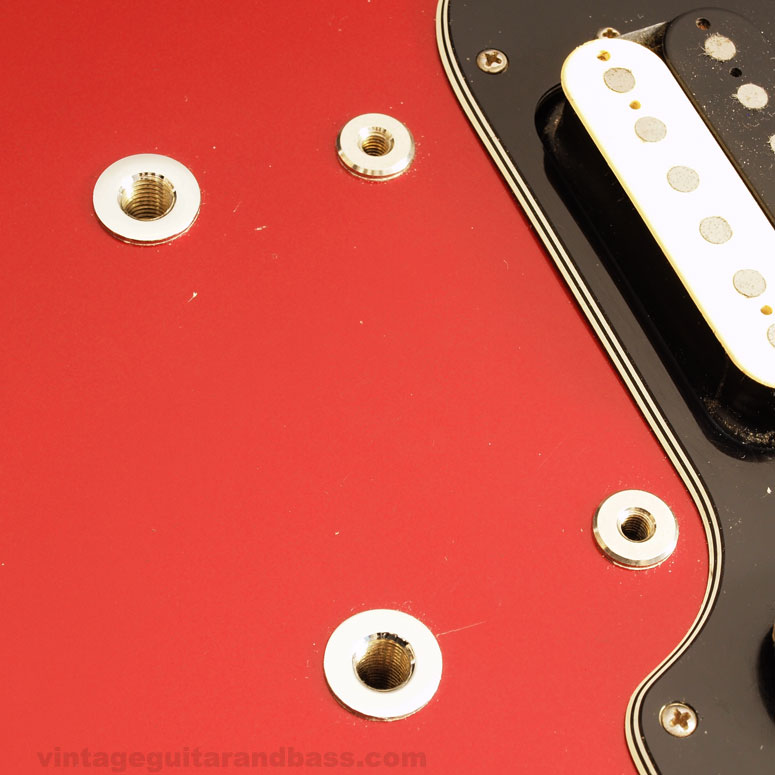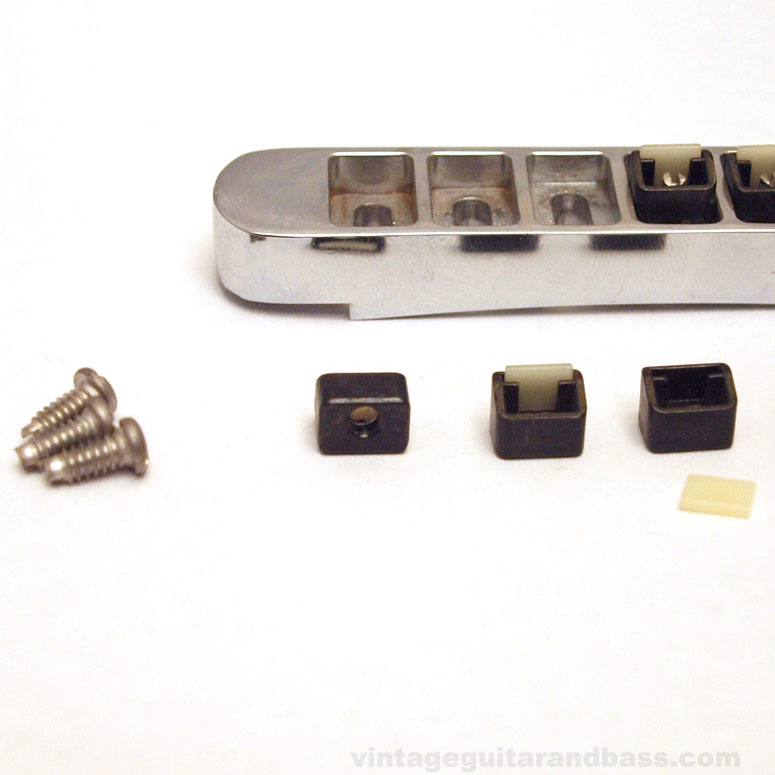
The top-adjust bridge was first used on the Gibson Explorer II, ES-335 dot, and later the Victory MV2 and MV10 models, and although clearly a very well conceived piece of hardware, it does not seem to have gained the useage perhaps it deserved. It was widely promoted as part of Gibson's spare parts merchandising, appearing on the cover of the 1983 parts price list.
It was designed by Gibson staff member Rendal Wall (who was also responsible for the TP-6), with a patent filed in November 1980, and granted in June 1982.
Supposedly, Victory MV guitars (at least initially) were shipped with both nylon and brass saddles, however the vast majority seen today are equipped with nylon, with no brass saddles hanging around the case!
It was described at length in the 1981 Gibson MV literature "Not only has it simplified the standard method of intonation adjustment (no more fumbling around the string and behind the bridge with your screwdriver), the 'top adjust' allows the player to change insert saddles from nylon to brass quickly and easily. now you can 'tailor' your sound to suit you exactly".
Aswell as easy intonation of the saddles, the bridge unit itself could be moved forwards or backwards "for radical string guage and/or climatic intonation adjustment"; the second image below shows the three potential post holes in the underside of this unit.
The fourth image below demonstrates the top slant of this unit - this allows the tailpiece to be lowered or raised without the string touching the bridge base - as would be the case with the standard 'flat-topped' bridge designs. The relative height of the stop bar affects sustain and stiffness of action, again as described in the Victory MV owners manual.
Gibson part number 80087 (chrome) and 80088 (gold).
List of Gibson guitar pickups






$140
$495
$139
$395
$139
$150
$149
$345
$225
$650
$140
$345
$2000
$500
$149
$75
$549
$750
$109
$399